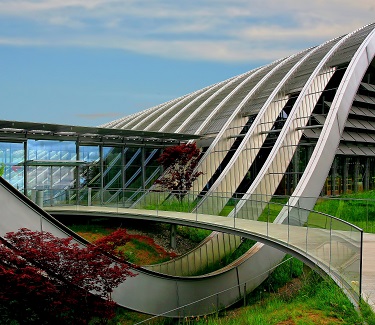SDA Report / SMP Report
Many Victorian councils require an SDA report (Sustainability Design Assessment report) for granting a planning permit. SDA report is therefore a detailed report that outlines the requirements of BESS. The SMP report (Sustainability Management Plan report) is similar to the SDA report but is required by the council for bigger projects and involves some additional requirements. Find out what you are looking for here:

At Energy Compliance Consultants, we offer low-cost and effective strategies for an SDA/SMP of your building.

Quality
Our strategy is to conduct low-cost and effective sustainability measures, suited to your development
Our ESD reports are council-ready, inclusive, accurate and illustrative.

Quality
Our strategy is to conduct low-cost and effective sustainability measures, suited to your development
Our ESD reports are council-ready, inclusive, accurate and illustrative.

Service Guarantee
If we can’t deliver on time, we’ll only charge our 40% deposit. This is the best proof of how cost-efficient our performance-based solutions are. You won’t get this anywhere else!

Quick Turnaround
Quotations: Same business day of inquiry.
SDA/SMP reports: 5-12 business days.

Quick Turnaround
Quotations: Same business day of inquiry.
SDA/SMP reports: 5-12 business days.
What is an SDA report? What is an SMP report?
SDA or SMP reports are ESD (Ecologically Sustainable Development) reports that demonstrate how much a new building or alterations to an existing building, is environmentally friendly, climate-resilient, energy-efficient and desirable to live/work in. Whether you need an SDA report or an SMP report is based on the size of your project. For smaller projects, councils require an SDA report, but in the case of larger projects, an SMP report is required, which covers the same criteria as an SDA report, but in greater detail and possibly, with some additional requirements by the councils.
Residential buildings:
Number of dwellings between 3-9
Commercial buildings (new or alteration):
Gross floor area between 500m2 to 1000m2
Residential buildings:
Number of dwellings 10 or more
Commercial buildings (new or alteration):
Gross floor area or more than 1000m2 OR
Developments over 4 storeys
What is involved in an SDA report / SMP report?
An SDA report or SMP report (also referred to as Sustainable Design Statement or ESD Management Plan) use BESS tool to address 10 sustainability criteria under SDAPP (Sustainable Design Assessment in the Planning Process) framework. All planning permit applicants are therefore required to use BESS tool or a similar system of assessment (e.g. Green Star Rating tool, MUSIC or STORM) to show how their developments are ecologically sustainable. BESS tool is supported by the Council Alliance for a Sustainable Built Environment (CASBE) which is an association within Municipal Association of Victoria (MAV). Under SDAPP framework, the following 10 key sustainability categories are:
Management
Assigning an ESD consultant to complex projects at the early planning stage certainly pays well and reduces the back-and-forth time between different design teams. Computer modelling has a lot to offer in addressing sustainability in new developments.


Water
Sustainable development goes hand in hand with water efficiency. As society cannot sustain without water, new developments in an ever-increasing population should find ways to manage and reduce water consumption through water-efficient fixtures, purification and reuse.
Energy
Reduction of load on grid, greenhouse gas emissions and energy bills are the main objectives of sustainable energy use. This is achievable with a passive design, right choice of insulation and glazing, energy-efficient services and the use of renewable energy sources.


Stormwater
Our development’s footprint not only makes the land impervious to the run-away water, but injects litter and chemicals to our surface or underground water sources. Sustainable approach is to preserve run-away waters or use it to reduce clean water consumption.
IEQ
A healthy environment as well as a pleasant experience of living or working in a space, relates to the topic of Indoor Environment Quality (IEQ). Artificial lighting and access to adequate daylight, good ventilation and low VOC material contribute to this experience.


Transport
The second source of Greenhouse gas emissions across Australia is transportation. Therefore, a sustainable development encourages the use of public transport or cycling as well as having infrastructure for electric vehicle charging.
Waste Management
Waste management is an issue in urban development. It is therefore an important contributor to the concept of sustainable growth. Recycling and reuse of waste during the construction and operation phases are required to pave a path for sustainable development.


Urban Ecology
Aesthetics of a development closely relate to how much vegetation it incorporates. Green facades and features bring a sense of attachment to nature for the occupants. Communal spaces also create a sense of attachment in occupants to one another.
Building Material
Life Cycle Assessment (LCA) of a development shows how much greenhouse gases have been emitted to produce different materials. Use of materials with low embodied carbon, low VOC and suitable thermal properties, proves an eco-friendly development.


Innovation
As technology and means of creativity grow, there is more room for innovative design. The innovation includes sustainability measures that are either new to the location where the building is situated; or extra solutions that exceed the Best Practice standards.
What are the mandatory requirements for an SDA report / SMP report?
There are set of mandatory requirements imposed on projects and involve:
Minimum requirements of National Construction Code (NCC)
These are the minimum requirements that buildings must comply with to get a building permit and involve minimum requirements for natural or artificial lighting, minimum services’ efficiency, minimum thermal performance requirements of the building envelope, building sealing, natural or mechanical ventilation, etc. NCC 2022 Vol 1.0 details these minimum requirements based on the development’s building classification.
Best Practice standard
BESS is a scoring system of assessment, ranging from 0 to 100. To get a planning permit, developments must achieve or exceed the score of 50 to comply with the Best Practice standard. Also, no development is allowed to achieve a score of less than 50 for Energy, Water and IEQ categories and a score of 100 for Stormwater category. Unlike NCC, achieving the Best Practice is not prescriptive and the applicant can choose how the development meets the above criteria.

Sustainability measures proven to work best for SDA/SMP
The answer to the above question depends on each project. However, the best approach is to address low-cost ESD initiatives that grant you the highest scores. Note that the best ESD measures are those that grant you scores in more than one category. Here, we discuss some of these measures:
ESD consultant, hired for modelling
Having an ESD consultant by your side pays very well. Involving an ESD professional in a pre-application meeting with the council grants you direct points in Management category. An ESD consultant could assess your building’s energy use or access to natural light and ventilation through computer modelling and grant you extra points in Management, IEQ and Energy categories. As an example, in one of our ESD projects, our involvement in a pre-application meeting and computer modelling contributed to a 50% score in Management and an additional 2% score overall.
Rainwater tanks for toilet flushing
Toilet flushing is the most water-consuming matter in most buildings. By storing the run-away rainwater from parts of the building’s roof in a rainwater tank, we kill two birds with one stone! Meaning not only we get to achieve the minimum requirement of the Stormwater category, but by connecting the rainwater to toilets, we get good compensation for water use in Water category. As an example, in one of our ESD projects, installing a 5000L tank for toilet flushing contributed to a 12% score in Water, a 100% score in Stormwater and an additional 11% score overall.
Demand-controlled ventilation
In many commercial buildings with large areas for the accommodation of people, one of the major sources of energy loss is due to the supply of fresh air (mechanical ventilation) to the occupants. This is especially the case for buildings located in cold climates. In these cases, the utilization of CO2 sensors that measure CO2 in an indoor space as a set point to trigger mechanical ventilation on or off is a good energy-saving measure. New technology also enables occupancy-controlled ventilation which modulates the flow of fresh air into the varying occupied spaces. Aside from energy saving, utilizing a demand-controlled ventilation system also grants you points in IEQ category. As an example, in one of our ESD projects, installing a demand-controlled ventilation with a concentration threshold of 500ppm, contributed to an 18% score in IEQ, a 6% score in Energy and an additional 9% score overall.
What are the council’s required documents for a Planning Permit?
An SDA report or SMP report (depending on the size of the development) that summarises the sustainability measures and features obtained from BESS, MUSIC, STORM or Green Star assessments. To prepare an SDA report or SMP report you need to:
Primary documentation
- Register your project on BESS (or GBCA, in case of SMP reports).
- Create an SDA or SMP report showing the sustainability features and solutions of your development.
- Include evidence of passing score/rating from your assessment tool.
- Include references to the ancillary documents with correct dates that are consistent with your SDA report.
Ancillary documentation
- Copy of the WSUD report (generated using STORM, MUSIC, etc)
- Copy of the Energy report (assessment tools: JV3, Green Star, NABERS, NatHERS, or DtS)
- Copy of Daylight Modelling report (if undertaken for the project)
- Copy of CFD report (if undertaken for the project)
- An intensive review of an innovative approach to the building’s design (if claiming Innovation points)
- Sustainability measures that could be marked on plats (e.g. permeable paving, water tanks, rain gardens, water-efficient landscaping, utility meters, renewable systems, etc.)
